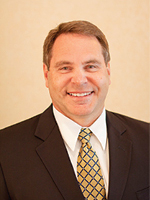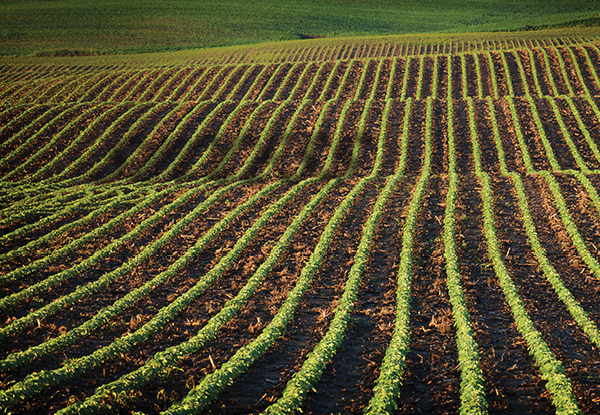Accommodating and instituting best management practices to achieve this pivotal component of nutrient stewardship seems simple enough. But dive into the intricacies associated with sourcing the perfect nutrient for each situation, and you’ll find that maybe even the most seasoned grower could glean a couple tips from a holistic look at nutrient source selection.

Dr. Cliff Snyder, IPNI
Dr. Cliff Snyder is the nitrogen program director for the International Plant Nutrition Institute (IPNI), a non-profit, science-based organization dedicated to the responsible management of plant nutrition for the benefit of the human family. His responsibilities include coordinating efforts of the Institute that deal with environmental issues related to nitrogen fertilizer use in agriculture, in North America and internationally.
According to Dr. Snyder, there are several important implications to consider when attempting to select the right nutrient source for both profitability and environmental responsibility.
-
ACCESS
A fertilizer is only as effective as your ability to get your hands on it, and Snyder urges growers to start there when making fertility plans.
“It seems simple, but it can be an actual limitation for some growers,” Snyder explains. “You have to choose a source, first and foremost, that you can get locally, and that you can find at your ag retailer. In some parts of the country, a grower may have access to two or three different sources. With nitrogen, for example, they may be able to choose between anhydrous ammonia, urea-ammonium nitrate solutions and urea. And there are other products out there as well that are important and valuable tools in the nitrogen source portion of the 4R toolbox that a farmer can select from, if he has access to them. So it’s important to learn what you have access to.”
-
WINDOWS
It’s no secret that planting in the optimum time window is critical. Some might even argue that it’s more critical than it has ever been, because of the ability of modern seed varieties to thrive under the right conditions.
That means it’s important to take into account application timing for an input and the positive or negative ramifications of the equipment you’ll be using to maximize that window of opportunity, as well as what type of conditions the application will be made under.
“If, for example, a grower hasn’t gotten his nitrogen applied before the crop emerges across much of the acreage, he may be forced to move quickly across that acreage with a less-than-optimal nitrogen source, just to make sure the crop doesn’t run short,” Snyder says. “We’re somewhat at the mercy of weather constraints when making those choices, but, certainly on coarse soils, where we have high rainfall and significant leaching loss risks, we want to be sure that we carefully select nitrogen sources and their timing. We must also be aware that most nitrogen sources can rapidly convert to nitrate under warm, moist conditions that might be prone to loss.”
-
OBJECTIVES AND CONSTRAINTS
It’s also important to take a long look at the objectives your operation is striving toward, and weigh them equally with any constraints that will (or should) impact nutrient sourcing.
“For instance, in conservation tillage systems, you have to be thinking about how your approach may need to be different than in tilled soil,” Snyder explains. “In cases in which we want to have minimal or no surface disturbance, it presents some challenges with some of our products that must be placed beneath the soil surface for maximum effectiveness.”
Additional constraints can also vary by field as soil conditions, area-specific environmental risks, and even proximity to neighbors and urban areas should be considered when choosing the right source, rate, timing and place of application for the job.
-
LOSS PREVENTION
It makes good sense to examine nutrient sources closely so that your prescription simply remains where you intended it to be. Of course, you want that input to provide a return on investment by delivering plants the nutrients they need, but you also want to be cognizant of the fact that if the nutrient doesn’t get taken up by the plant, it could end up somewhere you don’t want it to be.
That means assessing the risk of losing nitrogen due to runoff, leaching, drainage and gaseous losses (such as ammonia volatilization), and perhaps making adjustments to the source that will help it serve the plants and the environment.
“We could use some nitrification inhibitors with the ammonium forms of fertilizer, and limit or slow that conversion to nitrate so that there is less risk of loss due to conversion, leaching or drainage that might pose issues under wet conditions,” Snyder says.
“We want to increase or optimize crop recovery, while limiting the potential for losses from the soil to water and air resources,” he adds. “So I tell people that any source can be used very effectively, as long as you understand your system, plant uptake dynamics, and your loss pathways and economics.”
Loss prevention can also mean simply making sure the nutrient is available to the plant when the plant needs it. Snyder notes that sulfur (S) deficiencies can sometimes be confused with nitrogen deficiencies. Sulfur deficiencies seem to be on the rise throughout the Midwest, according to trusted university experts. He asserts that it’s important to address that specific deficiency with a nutrient source that creates season-long availability.
“Sulfur deficiencies during the season require a sulfur source that’s available to the plant,” Snyder says. “And we need to make sure we’re using sources that match those crop demands, that can provide those nutrients consistent with the uptake demand of the targeted crop.”
For instance, MicroEssentials®, the granular phosphate fertilizer from The Mosaic Company, can help enhance crop sulfur uptake and reduces sulfur losses that may result from the use of typical fertilizer blends by providing two forms of S (sulfate and elemental). This allows for immediate availability of sulfate sulfur for early-season growth, while the oxidation of elemental sulfur ensures S is provided throughout the growing season.

SOURCING KNOWLEDGE
Improving nutrient-source choice requires diligent attention as well as continued education, specifically because of the crop genetics, yield, weather and soil health trends that have a distinct effect on nutrient management. Opportunities provided by variable-rate application, cover cropping or slow-release products all require growers and those who advise them to continually reevaluate which sources work best on their acreage with each specific situation.
“It’s critical that as growers manage fertility, they are able to document what they’re doing, and can tell a story of how they’ve made their decisions with the 4Rs in a way that’s not just good for their farm, but also good for the neighbors and the community they live in,” says Dr. Cliff Snyder. “And when we have the kind of information that’s available with today’s technology, we can do a much better job of looking in the rear view mirror and evaluating what happened and what the consequences were than we could just trying to rely on memory.”
Also important is looking beyond your own historic practices, asking the right questions of the right people, and gathering knowledge from various sources to make informed decisions.
“Increasingly, I encourage growers to be sure to not just be stuck where they are, but try to explore something new each year,” Snyder says. “But to do it in a replicated manner and work with their crop advisor and ag retailer to evaluate what works best in their own farming systems with their management skills. That’s where the advice of the local ag retailer and the local certified crop advisor are, in my opinion, irreplaceable for growers. Growers have just got to work with those professional advisors. And also work with their neighbors. We need to continue to learn from one another.”